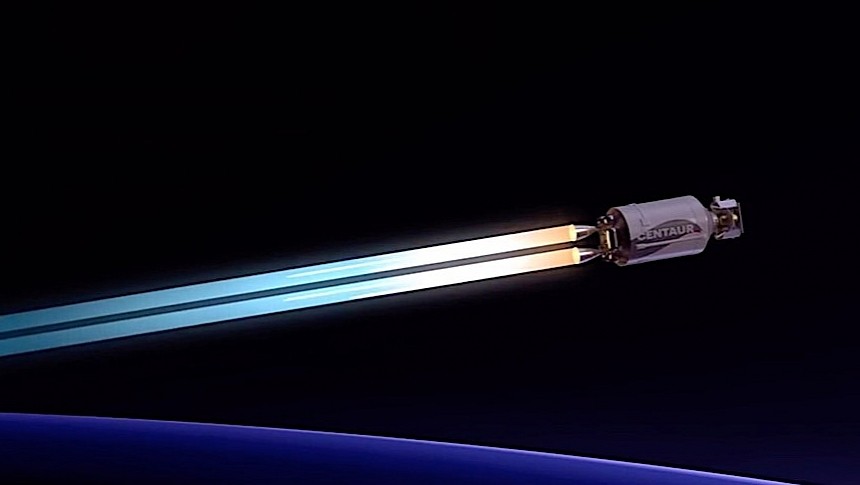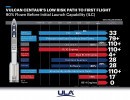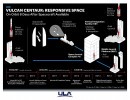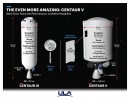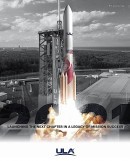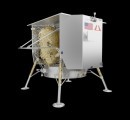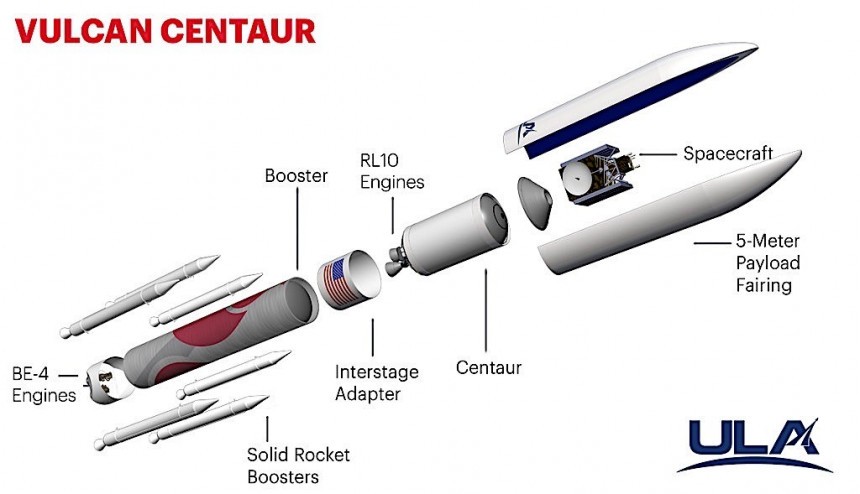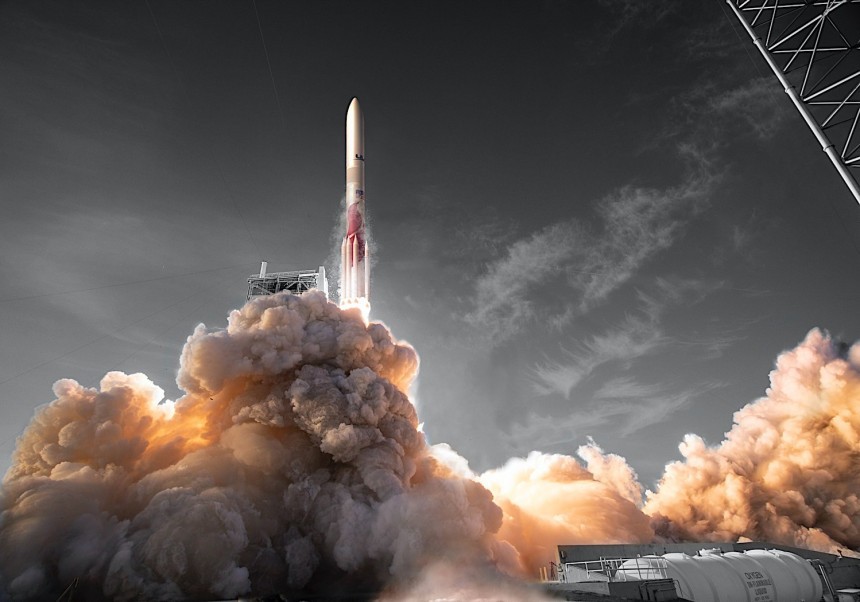The first NASA mission of the new year is off, after the space agency launched together with United Launch Alliance and Astrobotic a mission to the Moon, the first one in several decades. Here's what they plan to accomplish with the Peregrine lander and all the science it carries on board.
Believe it or not ever since NASA pulled the plug on the Apollo Moon exploration program, America sent more noteworthy pieces of hardware to Mars than to the nearby satellite. Peregrine is thus the first lunar lander to be shipped up there in more than five decades.
The mission is called Peregrine Mission One, and it's run by Pittsburgh-based company Astrobotic. The company is one of 14 private groups the American space agency accepted as part of the Commercial Lunar Payload Services program back in 2018, an effort meant to boost the exploration of the Moon in light of the mammoth Artemis program.
The mission took off today, January 8, 2024, at 2:18 EST. A United Launch Alliance (ULA) Vulcan rocket took off for the first time from Launch Complex 41 at Cape Canaveral Space Force Station in Florida, heading for the heavens with the Peregrine on board.
The lander is a small-class platform about as high as a tall human (1.9 meters/6.2 feet). It doesn't have any wheels, so it won't be moving about on the lunar surface, but it does have enough room and attachment points to carry with it a load of instruments for scientific research.
During Peregrine Mission One the lander is packed to the teeth with science, carrying both NASA and other commercial devices meant to give us a better understanding of Luna. Below is a closer look at the five NASA payloads, and what the space agency aims to achieve with them.
Firstly though it would help a lot to know where the lander is going because even if it appears small from our perspective, the Moon still is a large celestial body.
For the Peregrine mission the American space agency and its partners chose a site called Sinus Viscositatis. It's located on the near side of the Moon, and it's home to a strange geological feature called the Gruithuisen Domes.
As the name says, the place features domes of the natural kind, whose exact origin is a sort of geological enigma. We do have similar things here on Earth, and we do know they form as the result of large volumes of water behaving in certain ways.
Our best guess is that over on the Moon the domes were formed as the result of eruptions of silicic lava which for some reason did not flow outward, but stayed in place to create these domes.
There is hope that, just as it does on Earth, water played an important role in the formation of these domes, and traces of it might still be up there. Finding it is one of Peregrine's main missions, and one of the five instroments below is tasked with this mission.
1. The Linear Energy Transfer Spectrometer (LETS) is basically a radiation monitor based on the hardware used on the Orion Exploration Flight Test-1 back in 2014. Its main mission is to "collect data on the lunar radiation environment and demonstrate the capabilities of the radiation monitors themselves on the lunar surface."
Because it uses the same core technology as the Hybrid Electronic Radiation Assessor system that will be used to monitor radiation on the Artemis missions, LETS is getting its first true field test with the Peregrine.
2. The Near-Infrared Volatile Spectrometer System (NIRVSS) is a collection of instruments that includes an imager, spectrometer, and thermal sensor. It is meant to have a close look at the composition and surface temperature of the lunar soil, but also to get a sense of the fine-scale structure of the landing site.
That may seem a bit boring, but it'll help humans get a sense of what types of minerals and volatiles can be found up there.
3. The Neutron Spectrometer System (NSS) is just that, a spectrometer, and it is this one that is tasked with determining whether there are signs of water in the lunar soil, at least at its landing site.
4. The Peregrine Ion-Trap Mass Spectrometer (PITMS) is a tool that will be used to have a look at the lunar atmosphere. Yes, you can't see it, and chances are you probably didn't know it was there, but the Moon does have an atmosphere.
It's very thin and largely made of helium, argon, neon, ammonia, methane and carbon dioxide, but it's there. PITMS will have the first close look at it, trying to also pinpoint water, gases, and other chemical compounds.
5. The Laser Retroreflector Array (LRA) is actually a collection of eight retroreflectors that together form a hell of a measuring tool. It will be used to determine the distance between the orbiting or landing spacecraft and the lander.
The thing will become, in the decades to come, a permanent location marker, telling future generations all about the place where this historic mission landed but also helping future astronauts get a better sense of where they are.
As said, the Peregrine mission is just getting started. Now that it is in orbit it will get ready for power on and the start of the journey to the Moon. It will reach it at the end of February, with the landing date scheduled for the 23rd of the month.
The mission is called Peregrine Mission One, and it's run by Pittsburgh-based company Astrobotic. The company is one of 14 private groups the American space agency accepted as part of the Commercial Lunar Payload Services program back in 2018, an effort meant to boost the exploration of the Moon in light of the mammoth Artemis program.
The mission took off today, January 8, 2024, at 2:18 EST. A United Launch Alliance (ULA) Vulcan rocket took off for the first time from Launch Complex 41 at Cape Canaveral Space Force Station in Florida, heading for the heavens with the Peregrine on board.
The lander is a small-class platform about as high as a tall human (1.9 meters/6.2 feet). It doesn't have any wheels, so it won't be moving about on the lunar surface, but it does have enough room and attachment points to carry with it a load of instruments for scientific research.
During Peregrine Mission One the lander is packed to the teeth with science, carrying both NASA and other commercial devices meant to give us a better understanding of Luna. Below is a closer look at the five NASA payloads, and what the space agency aims to achieve with them.
For the Peregrine mission the American space agency and its partners chose a site called Sinus Viscositatis. It's located on the near side of the Moon, and it's home to a strange geological feature called the Gruithuisen Domes.
As the name says, the place features domes of the natural kind, whose exact origin is a sort of geological enigma. We do have similar things here on Earth, and we do know they form as the result of large volumes of water behaving in certain ways.
Our best guess is that over on the Moon the domes were formed as the result of eruptions of silicic lava which for some reason did not flow outward, but stayed in place to create these domes.
There is hope that, just as it does on Earth, water played an important role in the formation of these domes, and traces of it might still be up there. Finding it is one of Peregrine's main missions, and one of the five instroments below is tasked with this mission.
Because it uses the same core technology as the Hybrid Electronic Radiation Assessor system that will be used to monitor radiation on the Artemis missions, LETS is getting its first true field test with the Peregrine.
2. The Near-Infrared Volatile Spectrometer System (NIRVSS) is a collection of instruments that includes an imager, spectrometer, and thermal sensor. It is meant to have a close look at the composition and surface temperature of the lunar soil, but also to get a sense of the fine-scale structure of the landing site.
That may seem a bit boring, but it'll help humans get a sense of what types of minerals and volatiles can be found up there.
3. The Neutron Spectrometer System (NSS) is just that, a spectrometer, and it is this one that is tasked with determining whether there are signs of water in the lunar soil, at least at its landing site.
It's very thin and largely made of helium, argon, neon, ammonia, methane and carbon dioxide, but it's there. PITMS will have the first close look at it, trying to also pinpoint water, gases, and other chemical compounds.
5. The Laser Retroreflector Array (LRA) is actually a collection of eight retroreflectors that together form a hell of a measuring tool. It will be used to determine the distance between the orbiting or landing spacecraft and the lander.
The thing will become, in the decades to come, a permanent location marker, telling future generations all about the place where this historic mission landed but also helping future astronauts get a better sense of where they are.
As said, the Peregrine mission is just getting started. Now that it is in orbit it will get ready for power on and the start of the journey to the Moon. It will reach it at the end of February, with the landing date scheduled for the 23rd of the month.
